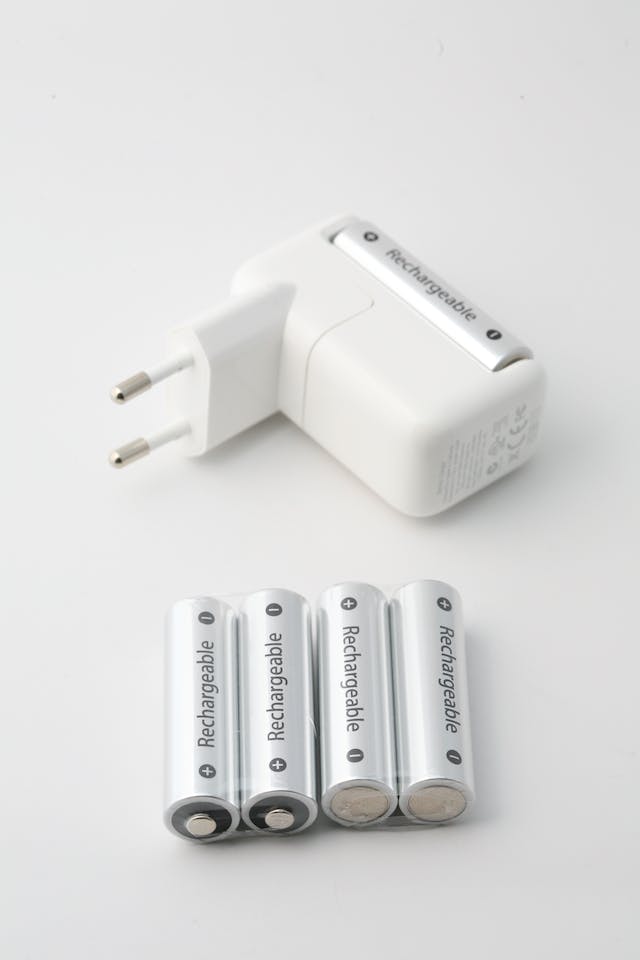If your household is equipped with numerous battery-powered devices, making the switch to rechargeable batteries can be a cost-effective choice.
Our experts recommend the Energizer AA rechargeable batteries as the best overall option, particularly suitable for remotes and low-power devices.
Top-Rated AA and AAA Rechargeable Batteries in 2024
Energizer Rechargeable AA Batteries (8-Pack)
Pros:
- 5-year average lifespan
- Maintains charge for 12 months in storage
- Partially made from recycled batteries
Cons:
- Somewhat quick discharge between charges
This set of eight AA batteries from Energizer is an ideal household solution, ensuring the uninterrupted operation of remotes, cameras, and children’s toys throughout the year.
Comprising 4% recycled batteries, they also contribute to a more environmentally friendly approach.
Pre-charged and ready for immediate use, these batteries can be recharged approximately 1,000 times in their lifecycle, potentially replacing hundreds of disposable batteries.
The “Extended Life Composition” by Energizer promises up to five years of regular use before recycling becomes necessary. Additionally, if not used immediately, these batteries can maintain a storage charge for up to a year.
Each charge provides 5.5 to 8 hours of use, making them suitable for devices with infrequent or minimal power needs, such as TV remotes or flashlights.
However, for electronics with extended usage or higher energy consumption, like string lights or video game controllers, more frequent recharging may be required.
Specifications:
- Size: AA
- Type: NiMH (nickel metal hybrid)
- Capacity: 2,000mAh
- Recharge Cycles: 1,000
- Pre-charged: Yes
Energerizer AAA Recharger Power Plus (4 count)
Pros:
- Maintains charge for 12 months in storage
- Partially made from recycled batteries
Cons:
- Shorter overall lifespan
For a budget-friendly solution to power household items, consider the pack of Energizer AAA rechargeable batteries in the Recharge Power Plus model.
Designed to last longer between charges, these batteries are particularly suitable for electronics with high power consumption, such as digital cameras or children’s toys.
Made from 4% recycled batteries, these batteries can hold their charge for about a year in storage. The main drawback is that they support fewer recharge cycles, maxing out at approximately 700 cycles.
Specifications:
- Size: AAA
- Type: NiMH (nickel metal hybrid)
- Capacity: 800mAh
- Recharge Cycles: 700
- Pre-charged: Yes
Top Choice for Longevity
Panasonic 16-Pack Eneloop AA and AAA
Pros:
- Up to 2,100 recharge cycles
- Maintains charge for 10 years in storage
- Works in cold weather
Cons:
- More expensive
- Charger not included
Panasonic’s Eneloop brand AAA rechargeable batteries stand out for their exceptional longevity, making them a worthwhile investment despite their slightly higher price point.
With the capacity for up to 2,100 recharge cycles, these batteries offer approximately twice the lifespan of standard rechargeable options.
They boast a quick charging time of about two hours, ensuring minimal downtime between uses.
Pre-charged upon purchase and featuring “low self-discharge” technology, these batteries can retain around 70% of their power for up to 10 years in storage.
Notably, Eneloop AAA batteries are capable of functioning even in frigid temperatures as low as -4°F, making them an ideal choice for outdoor electronics such as lights, security cameras, or emergency kits in vehicles.
Specifications:
- Size: AAA
- Type: NiMH (nickel metal hybrid)
- Capacity: 800mAh
- Recharge Cycles: 2,100
- Pre-charged: Yes
Factors to Consider When Choosing Rechargeable Batteries
Long Life
Evaluate the recharge cycle rating of rechargeable batteries, indicating how many times they can be charged, used, and charged again before their effectiveness diminishes.
Opt for batteries with a minimum rating of 500 recharge cycles or consider higher-end options with ratings of up to 2,000 recharge cycles for enhanced longevity.
Charge Capacity
Pay attention to the charge capacity of rechargeable AA and AAA batteries, typically measured in mAh (milliampere-hour). Higher charge capacity is advantageous for devices with high power demands, while lower capacity batteries may suffice for devices requiring less energy, such as wall clocks or remote controls.
Low Self-Discharge
Consider the level of self-discharge exhibited by rechargeable batteries, indicating how much charge they lose when idle.
This feature is particularly valuable if you intend to store spare batteries for future use, allowing you to retrieve fresh ones from storage without delay.
Beta feature
Beta feature
Beta feature

